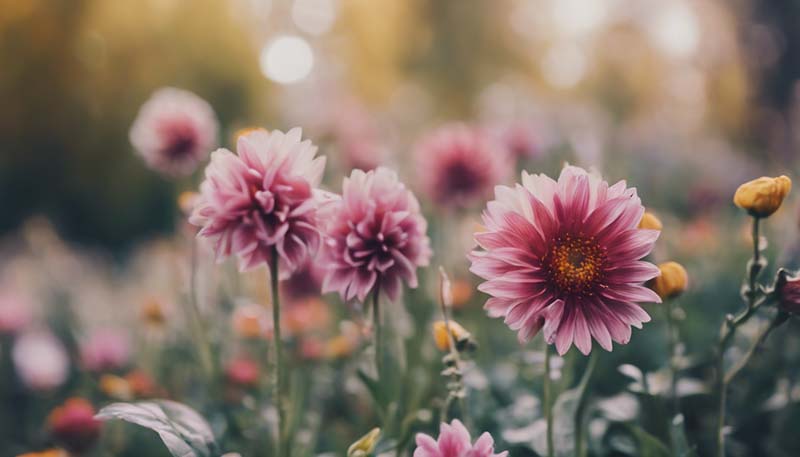Seasonal Flowers for a Romantic Garden: A Guide for Couples
Arrangements | 2024-05-22
Seasonal Flowers for a Romantic Garden: A Guide for Couples
Welcome to the enchanting world of romantic gardening. A garden is an extension of your home, a place where you can nurture your love for nature and each other. Creating a romantic garden that blooms with seasonal flowers is a labor of love that can bring you closer together and provide a sanctuary for relaxation and intimacy. This guide will walk you through the process of selecting and planting seasonal flowers that will ensure your garden is a vibrant and colorful retreat throughout the year.
Understanding the Seasons
The first step in creating a romantic garden is to understand the climate and seasonal changes in your area. Different regions will have varying weather patterns, which will influence the types of flowers that will thrive. Here's a general overview of what you can expect from each season:
Spring
Spring is a time of rebirth and renewal. It's the perfect time to plant flowers that symbolize new beginnings, such as tulips, daffodils, and hyacinths. The weather is mild, and the soil is rich from the winter rains, making it ideal for planting.
Advertisement
Summer
Summer brings with it long days and warm temperatures. This is the time for bright, bold colors and fragrant blooms. Sunflowers, roses, and lavender are classic summer flowers that can add a romantic touch to your garden.
Autumn
Autumn is a season of change, with cooler temperatures and the leaves turning to vibrant shades of red, orange, and yellow. Plant flowers that reflect the season's hues, such as marigolds, chrysanthemums, and asters.
Winter
Winter can be a challenging time for gardening, but it's not impossible. Look for hardy flowers that can withstand cold temperatures, such as pansies, winter jasmine, and hellebores. These flowers can add a touch of color and cheer to your garden during the colder months.
Selecting Romantic Flowers
When selecting flowers for your romantic garden, consider the following characteristics:
Color
Choose colors that evoke a sense of romance and warmth. Pastels like pink, lavender, and pale blue can create a soft, inviting atmosphere. Deep reds and purples can add a sense of passion and drama.
Scent
Fragrance is a key component of a romantic garden. Flowers with a strong, pleasant scent can enhance the sensory experience of your garden. Roses, jasmine, and lavender are well-known for their intoxicating scents.
Shape and Form
The shape and form of the flowers can also contribute to the romantic feel of your garden. Look for flowers with delicate petals or those that have a classic, elegant appearance, such as peonies and lilies.
Symbolism
Many flowers have symbolic meanings associated with love and romance. For example, roses symbolize love and passion, while lilies represent purity and elegance. Incorporating flowers with romantic symbolism can add an extra layer of meaning to your garden.
Designing Your Romantic Garden
Once you've selected your flowers, it's time to design your garden. Here are some tips to create a romantic and cohesive design:
Focal Points
Create focal points in your garden with statues, fountains, or a pergola covered in climbing roses. These features can serve as a central point around which you can arrange your flowers.
Curving Paths
Instead of straight paths, consider using curving pathways to create a sense of mystery and exploration. This can also make your garden feel more intimate and enclosed.

Layering
Layering your plants can add depth and dimension to your garden. Plant taller flowers, such as delphiniums or sunflowers, towards the back of your garden and shorter flowers, like pansies or violas, towards the front.
Seating Areas
Include comfortable seating areas where you and your partner can relax and enjoy the beauty of your garden. A bench or a hammock tucked away among the flowers can be a perfect spot for a romantic escape.
Lighting
Don't forget about lighting. Soft, warm lighting can enhance the romantic atmosphere of your garden, especially during the evening hours. Consider using string lights, lanterns, or solar-powered lights to illuminate your garden after dark.
Planting and Maintenance
Now that your garden is designed, it's time to start planting. Here are some general tips for planting and maintaining your romantic garden:
Soil Preparation
Before you plant, prepare the soil by removing any weeds and adding compost or other organic matter to improve drainage and fertility.
Planting at the Right Time
Plant your flowers at the appropriate time for your climate. This will ensure that they have the best chance of thriving and blooming throughout the season.
Watering
Water your plants regularly, especially during the first few weeks after planting. Be careful not to overwater, as this can lead to root rot and other problems.
Pruning and Deadheading
Regular pruning and deadheading (removing spent flowers) can encourage more blooms and keep your garden looking tidy and attractive.
Pest and Disease Control
Keep an eye out for pests and diseases that can damage your plants. Use organic or chemical controls as needed to protect your garden.
Conclusion
Creating a romantic garden is a wonderful way to express your love for each other and for nature. With careful planning, thoughtful selection of flowers, and diligent maintenance, you can create a beautiful and serene space that you both will enjoy for years to come. Remember, the most important part of any garden is the love and care you put into it.
Happy gardening!
Comments